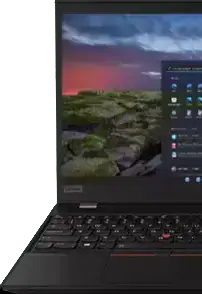What is computer art?
Computer art is the creation of aesthetically pleasing images and animations using computers. It's a form of digital art that leverages software, algorithms, and sometimes hardware to generate visuals. You might use it to create anything from simple designs to complex 3D models or interactive installations. Artists have been using computer technology to push the boundaries of traditional art for a long time, leading to a new era of creativity where your programming skills can be as important as your artistic eye.
Can computer art be considered a form of traditional art?
While computer art utilizes technology, many argue that it's a contemporary extension of traditional art. The principles of design, color, composition, and expression remain foundational, similar to painting or sculpture. However, it's unique in its methods and mediums, often involving code, digital canvases, and virtual tools. You can still explore traditional art concepts, but through a digital lens, opening new possibilities for expression and experimentation beyond physical materials.
Can a beginner with no art background create computer art?
Yes, beginners with no art background can dive into computer art. You might start with basic drawing applications, moving to more sophisticated software as you become comfortable. Your creativity and willingness to experiment are often more crucial than your pre-existing art skills. With practice, you can develop both your artistic abilities and technical know-how.
What are some popular styles of computer art?
Popular styles of computer art include pixel art, which harks back to early video game aesthetics, and 3D modeling, which creates lifelike images and animations. There's also fractal art, where you use mathematical algorithms to create intricate patterns, and digital painting, which mimics traditional painting techniques in a digital format. Generative art, where you create systems that autonomously generate artwork based on set rules, is also gaining popularity among tech-savvy artists.
Does computer art only involve visual elements?
Computer art primarily focuses on visual elements, but it can also include interactive components that respond to user input, environmental data, or other variables. For instance, you might create installations that change visuals based on sound, movement, or even social media activity. In this way, it can bridge into multimedia art, combining sound, visuals, and interactivity to create comprehensive experiences that go beyond just the visual aspect.
What programming languages are used in computer art?
Artists commonly use programming languages that are accessible and have strong graphical capabilities. Processing, a language built on Java, is designed specifically for visual arts and offers a straightforward syntax ideal for beginners. JavaScript, with libraries like p5.js, allows for creating interactive art online. For more complex or performance-intensive works, C++ is used with graphics libraries like OpenGL or frameworks like openFrameworks. Python, with libraries like Pygame, is also an option for creating simple computer art.
How does generative art differ from other types of computer art?
Generative art stands out because you create systems that generate the art, rather than crafting each image or animation manually. You would write algorithms that define how the visuals evolve over time, which can produce unique and unexpected results. This art form often results in pieces that are non-repeating and dynamic, offering a stark contrast to static images. The beauty of generative art is that it can surprise even the creator, as the interplay of randomness and control creates complex patterns and structures.
What impact has computer art had on the animation industry?
Computer art has revolutionized the animation industry, enabling the creation of films and games with unprecedented levels of detail and realism. 3D modeling and animation have become the industry standard for major studios, while 2D animation has also benefited from the precision and efficiency of digital tools. Software has automated many of the labor-intensive processes involved in animation, allowing for more complex movements and effects to be achieved in less time.
What is the difference between computer-generated art and computer-aided art?
Computer-generated art is typically created autonomously by software following the artist's programmed instructions, with little to no direct manipulation of the final image by the artist. Conversely, computer-aided art involves the artist using software tools to manually create or enhance the artwork. In the latter, the computer acts more like a digital brush or palette, while in computer-generated art, it's akin to an autonomous artist following a set of creative directives.
Can virtual reality (VR) and augmented reality (AR) change computer art?
Virtual and augmented reality are set to expand the boundaries of computer art by creating immersive and interactive experiences. In VR, you can craft entire worlds for users to explore, making the art piece an environment rather than a static image or sculpture. AR brings digital art into the physical world, overlaying it onto your everyday environment. These technologies encourage a new kind of art that is experiential and spatial, offering new ways for you to interact with and interpret artistic works.
What role does computer art play in modern advertising?
In modern advertising, computer art plays a pivotal role in creating eye-catching and memorable visuals. It allows for the creation of polished, professional-grade graphics and animations that can tell a story or convey a message powerfully and succinctly. Digital billboards, online ads, and television commercials often use computer art to create dynamic and persuasive imagery that can be tailored to any context or audience, making it an essential tool for marketers.
What is the role of computer art in video games?
Computer art is central to video game development, defining the visual identity and helping to craft the game's world and storytelling. Artists create character designs, environments, textures, and user interface (UI) elements, ensuring that every visual aspect contributes to an immersive gaming experience. Advances in computer graphics have also allowed for more realistic and stylized graphics, enhancing gameplay with stunning visuals that can make the game more engaging and enjoyable for players.






